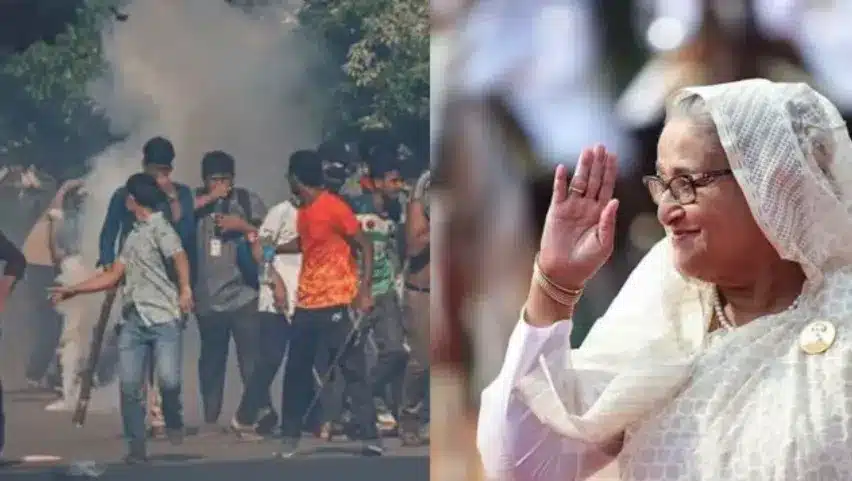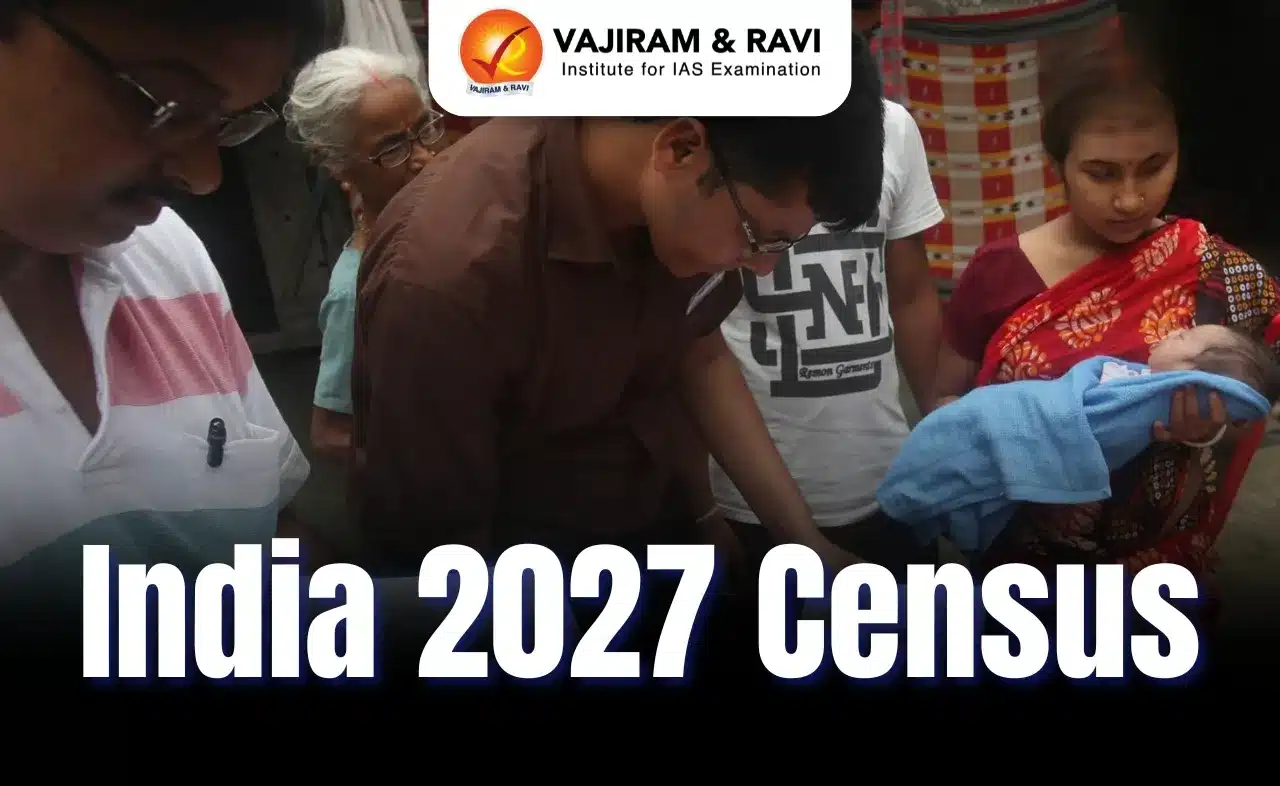What’s in today’s article?
- Why in News?
- Background – reservation policy of Bangladesh
- Why are students protesting in Bangladesh?
- Razakars
Why in News?
- Protests against job quotas in Bangladesh have turned violent, resulting in over 100 deaths and leading to a siege of Dhaka. In response, the Sheikh Hasina government has imposed a curfew and an internet shutdown.
- New Delhi has refrained from commenting, considering it an internal matter for Bangladesh. Meanwhile, the Indian mission in Bangladesh has helped 978 Indians return home: 778 via land borders and around 200 by flights.
- The mission is also in contact with more than 4,000 Indian students still in Bangladesh, according to the Ministry of External Affairs.
Background – reservation policy of Bangladesh
- Reservation system notified in 1972
- The system was notified on September 5, 1972, reserving 30% of government and semi-government posts for freedom fighters, and 10% for women.
- Situation after the assassination of Sheikh Mujibur Rahman
- After the assassination of Sheikh Mujibur Rahman, the founder of Bangladesh, in August 1975, however, the quotas were effectively frozen until 1996 — when Hasina became Prime Minister for the first time.
- Benefits of the freedom fighters’ quota were subsequently extended to their sons and daughters.
- Situation after 2001
- After the Awami League lost power in 2001, the process of implementation of the quota slowed down again.
- But Hasina returned as Prime Minister in 2009 and, two years later, the quota benefits were also made available to the grandchildren of freedom fighters.
- Withdrawal of the quota in 2018
- In 2018, the then Hasina government decided to scrap the freedom-fighter and other quotas.
- This was subsequently challenged in the court.
- In its June 5 order, the High Court ruled the government’s decision was arbitrary — and that the freedom fighters and their progeny remained one of the most backward sections of the country’s citizens.
Why are students protesting in Bangladesh?
- Opposition to the return of a 30% quota in government employment
- The protests are led by youths of Bangladesh.
- They are opposed to the return of a 30% quota in government employment at all levels for those who fought for the freedom of Bangladesh from Pakistan, as well as their children and grandchildren.
- Statement made by PM of Bangladesh
- The situation was inflamed by a statement from PM Sheikh Hasina, in which she seemed to equate the protesters with the descendants of razakars.
- Razakars were mercenary collaborators of the Pakistan military who led a brutal campaign of murder and rape in which up to 3 million Bangladeshis are estimated to have been killed in the space of a few months in 1971.
- The situation was inflamed by a statement from PM Sheikh Hasina, in which she seemed to equate the protesters with the descendants of razakars.
- Violence Sparked by a court order
- On June 5, the High Court Division of the Supreme Court of Bangladesh reinstated the 30% job quota for freedom fighters’ descendants, overturning a 2018 government decision to eliminate these quotas.
- Although the government has expressed agreement with the students’ demands, it has appealed to the Supreme Court, which has suspended the High Court’s ruling and will hear the case on August 7.
- Since April, students and teachers have been protesting, demanding that quotas be capped at 10%.
- These protests have involved clashes with police and the Bangladesh Chhatra League, the student wing of the ruling Awami League party.
- Economy and employment
- As per the experts, the violence is now being driven by wider economic discontent, including high inflation, growing unemployment, and shrinking foreign exchange reserves.
- More than two-thirds of Bangladesh’s 170 million population is the working age group of 15-64.
- As per official data, 1.8 million to 1.9 million young people join the job market every year.
- Besides the 30% quota for freedom fighters, there are 10% quotas each for women and backward districts, 5% for members of tribal communities, and 1% for persons with disabilities, taking the total reservation to 56%.
- Government jobs in Bangladesh are highly sought after for their stability and guaranteed income.
- The country’s export-oriented enterprises are still recovering from disruptions caused by COVID-19 and the war in Ukraine.
- Between 2019 and 2023, only 3.5 lakh government appointments were made, leaving over 5 lakh positions vacant.
- As per the experts, the violence is now being driven by wider economic discontent, including high inflation, growing unemployment, and shrinking foreign exchange reserves.
Razakars
- In what was then East Pakistan, the Pakistan Armed Forces, along with radical Islamists, formed three main militias—Razakars, al-Badr, and al-Shams—to suppress civil liberties, target freedom fighters, and terrorize civilians.
- These militias, with the support of the Pakistan Armed Forces, subjected Bengalis to genocidal acts, including rape, torture, murder, and forced deportation.
- As per historians, the term “Rezakar” originated in Hyderabad (modern-day India) and referred to “volunteers.”
- In India, the Rezakars were a paramilitary force in Hyderabad that opposed integration with India after 1947.
- They were founded by Majlis-e-Ittehadul Muslimeen leader Bahadur Yar Jung and led by Qasim Rizvi.
- After their defeat by the Indian Armed Forces in Operation Polo in 1948, Rizvi emigrated to Pakistan.
Q.1. Who was Sheikh Mujibur Rahman?
Sheikh Mujibur Rahman, often called the “Father of the Nation” of Bangladesh, was a prominent political leader who led the country to independence from Pakistan in 1971. He served as Bangladesh’s first Prime Minister and later as President..
Q.2. What is the geographical location of Bangladesh?
Bangladesh is located in South Asia, bordered by India to the west, north, and east, Myanmar (Burma) to the southeast, and the Bay of Bengal to the south. It lies on the delta of the Ganges, Brahmaputra, and Meghna rivers.
Source: Why are students protesting in Bangladesh?
Last updated on June, 2025
→ UPSC Notification 2025 was released on 22nd January 2025.
→ UPSC Prelims Result 2025 is out now for the CSE held on 25 May 2025.
→ UPSC Prelims Question Paper 2025 and Unofficial Prelims Answer Key 2025 are available now.
→ UPSC Calendar 2026 is released on 15th May, 2025.
→ The UPSC Vacancy 2025 were released 1129, out of which 979 were for UPSC CSE and remaining 150 are for UPSC IFoS.
→ UPSC Mains 2025 will be conducted on 22nd August 2025.
→ UPSC Prelims 2026 will be conducted on 24th May, 2026 & UPSC Mains 2026 will be conducted on 21st August 2026.
→ The UPSC Selection Process is of 3 stages-Prelims, Mains and Interview.
→ UPSC Result 2024 is released with latest UPSC Marksheet 2024. Check Now!
→ UPSC Toppers List 2024 is released now. Shakti Dubey is UPSC AIR 1 2024 Topper.
→ Also check Best IAS Coaching in Delhi






















